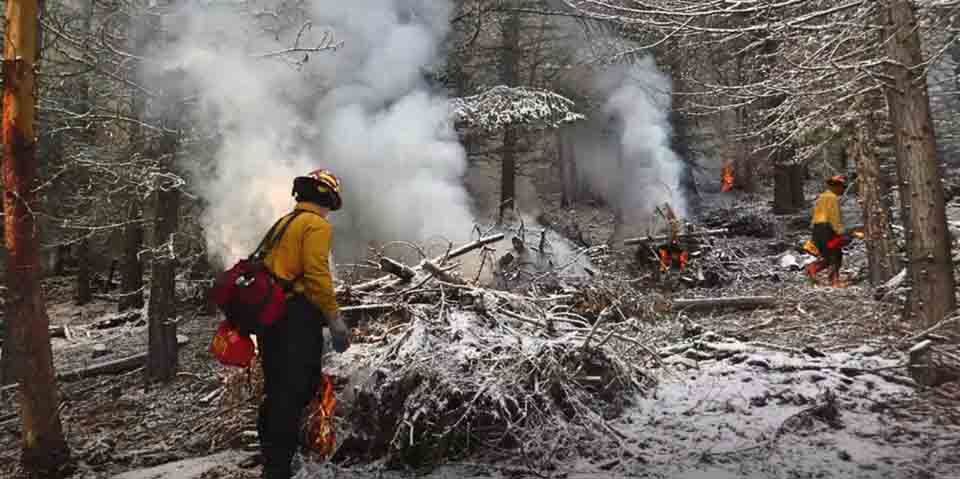Ashland Unveils Bold Community Wildfire Protection Plan to Safeguard 90% of Properties by 2036

ASHLAND, Ore. — An impressive Community Wildfire Protection Plan (CWPP) has been developed by the City of Ashland, Fire and Rescue, and the CWPP management advisory committee after extensive community participation.
Set out in storybook format, residents are urged to visit the website to learn about the bold and coordinated action plan to protect the economy, infrastructure, people, and ecosystems of this beautiful Oregon city.
To survive and thrive in the face of growing wildfire risks that have placed the city at a 97% risk of wildfire, the CWPP maps out steps to safeguard businesses, health care facilities, schools, and thousands of properties within the city limits.
Only 15% of Residential Properties Meet Wildfire Resilient Construction Standards
The outcome of research by the CWPP resulted in some staggering facts: only 15% of the city’s residential properties meet wildfire-resilient construction standards, and without intervention, wildfires and smoke damage could amount to $1 billion over the next three decades.
Four Distinct Goals Drawn to Meet Wildfire Resistant Goals
Ashland City has set a clear goal – to have 90% of all properties wildfire-resistant within the next 10 years.
To achieve this goal, stronger building codes will have to be devised, consistent enforcement of defensible space will have to be implemented, financial assistance for residential upgrades will have to be made available, and an improved evacuation plan will have to be devised.
Protection measures for vulnerable community members and those living in rented premises will also be formulated.
Protecting densely built communities requires a high level of preparedness, and the CWPP proposes to use existing data to prioritize the protection of 7,000 residential homes, 2,700 multi-family housing units, and 1,280 institutional and commercial properties.
To achieve this goal, Ashland City will require residents to adhere to mandatory defensible space requirements and ember-resistant retrofits. Safety codes will be upgraded to offer time and resources to meet compliance.
Low-income and physically handicapped residents will be provided with financial assistance.
The CWPP estimates that at least 90% of all structures in Ashland will meet wildfire-resistant standards by 2036.
Almost 50% of residents live in rented accommodation, many in old buildings requiring safety improvements.
Particularly vulnerable in this category are low-income, senior, disabled, and limited-English households. The CWPP ensures that every home in the city will be offered an achievable safety option.
Landlords and Property Management Companies Will Have to Meet New Safety Codes
Landlords and property management companies will have to meet the new wildfire and landscaping codes. The CWPP reminds that wildfire resilience is a right and not a privilege.
Among its key actions will be the creation of wildfire evacuation and recovery plans for businesses, cultural institutions, and critical infrastructure. The Ashland Chamber of Commerce Emergency Preparedness Toolkit will be updated, and workshops will be provided for business owners.
Another area of focus is strengthening the city’s forests, wildlands, and water quality, and the CWPP will be partnering with the U.S. Forest Service to develop a long-term strategy to protect federal land adjacent to city boundaries.
According to the CWPP website, the plan of action involves every member of the community. For more information, visit ashlandoregon.gov/CWPP. Residents can submit comments until 2 June with suggestions to improve the current draft.
